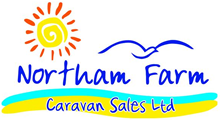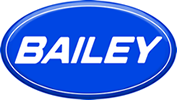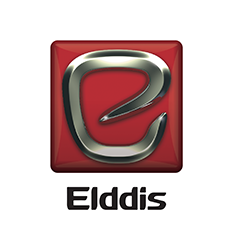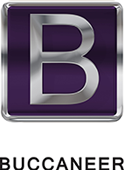Key Features to Look for When Buying a Used Caravan
Welcome to our latest blog post, where we delve into the world of pre-owned caravans. This comprehensive post provides essential tips and pointers to help you decide when purchasing a used caravan. We understand that buying a used caravan can be daunting.
However, you can secure a fantastic deal on a high-quality, pre-owned caravan with the right knowledge.
Importance of Comprehensive Inspection
When purchasing a used caravan, it is crucial to conduct a comprehensive inspection. This process involves more than just a cursory glance over the unit; it requires a detailed and meticulous examination of the caravan’s exterior and interior.
The purpose of this inspection is to identify any potential issues that may not be immediately apparent and to ensure that the overall condition of the caravan meets your expectations.
Exterior Check
The exterior of a caravan can provide a wealth of information about its history and current condition. Here are some key areas to focus on during your inspection:
-
Dents and Scratches: While minor dents and scratches are expected on a used caravan, large or deep ones can indicate past accidents or mishandling. These could lead to more serious structural issues.
-
Windows and Doors: Ensure all windows and doors work well. They should open and close smoothly, and there should be no signs of damage or leaks.
-
Tyres: The condition of the tyres is crucial for the safety and performance of the caravan. Look for signs of wear, such as cracks or bulges, and check the tread depth to ensure it meets legal requirements.
-
Signs of Dampness: Dampness can cause significant damage to a caravan, including rot and mould. Check for any signs of dampness, such as discolouration, a musty smell, or soft spots on the walls or floor.
Interior Inspection
The interior of a caravan is where you will spend most of your time, so it’s important to ensure it’s in good condition. Here are some areas to focus on:
-
Leaks or Damp: As with the exterior, check for any leaks or dampness inside the caravan. Pay particular attention to the corners and edges of the caravan, as these are common areas for leaks to occur.
-
Appliances and Fixtures: Test all appliances and fixtures to ensure they are in good working order. This includes the cooker, fridge, heating system, and built-in features such as a TV or radio.
-
Upholstery and Floor Condition: Check the condition of the upholstery and floor. Look for any signs of wear or damage, and sit on the seats and lie on the beds to ensure they are comfortable.
-
Electrical Systems: Test all electrical systems, including the lights, sockets, and built-in appliances. Any issues with the electrical systems can be costly to repair, so it’s important to identify these before purchasing.
Remember, a comprehensive inspection is not just about finding the perfect caravan; it’s about ensuring the caravan you choose is safe, comfortable, and worth the investment.
Understanding the Caravan’s History
When purchasing a used caravan, understanding its history is paramount. This knowledge can provide invaluable insights into the caravan’s use, maintenance, and potential issues.
By delving into the caravan’s past, you can make an informed decision about its future.
Service History
The service history of a caravan is a testament to its upkeep.
Regular maintenance records are a good sign, indicating that the previous owner took good care of the caravan. These records can include routine checks, servicing, and any repairs or replacements that have been carried out. Determining if the caravan has been involved in any accidents or suffered any damage is crucial. This information can alert you to potential structural issues that may not be immediately visible.
Furthermore, understanding the frequency of use can give you an idea of the wear and tear the caravan has undergone.
Ownership History
The ownership history of a caravan can tell you a lot about its past. For instance, the number of previous owners can give you an idea of the caravan’s stability.
A caravan that has changed hands frequently might raise some red flags. The duration of ownership can also provide insights. A long-term owner is likely to have maintained the caravan well. On the other hand, a short-term owner might indicate potential issues with the caravan. Understanding the reasons for selling can also be enlightening. It might be as simple as the previous owner upgrading to a new model, or there could be underlying issues with the caravan that prompted the sale.
Finally, asking for the original purchase documents is always a good idea. These can provide further information about the caravan’s history and help verify its authenticity. Understanding the caravan’s history is crucial in the buying process. It can help you avoid potential pitfalls and ensure that you’re investing in a high-quality, pre-owned caravan.
Remember, knowledge is power, especially when making significant purchases like a used caravan.
Essential Amenities and Features
When purchasing a used caravan, one of the most important aspects is its amenities and features. These can greatly enhance your caravanning experience and ensure you have all the comforts of home while on the road.
-
Kitchen Facilities: The kitchen is the heart of any home, and your caravan is no exception. When inspecting a used caravan, pay close attention to the kitchen facilities.
-
Cooker and Hob Condition: The cooker and hob are essential for preparing meals. Check the condition of these appliances and ensure they are in good working order. A well-maintained cooker and hob ensure you can cook your meals easily and indicate that the previous owners took good care of the caravan.
-
Fridge and Freezer Functionality: A functional fridge and freezer are crucial for keeping your food fresh, especially during long trips. Ensure they are in good working condition and can maintain the correct temperatures.
-
Adequate Storage Space: Storage space is often at a premium in a caravan. Look for smart storage solutions in the kitchen, such as cupboards, shelves, and drawers, that allow you to store your cooking utensils and food items efficiently.
-
Clean and Functioning Sink: A clean and functioning sink is essential for maintaining hygiene in the kitchen. Check the taps for leaks and ensure the drainage system works properly.
Sleeping and Living Areas
The sleeping and living areas of a caravan should offer comfort and functionality. Here are some things to look out for:
-
Comfortable and Clean Beds: Ensure the beds are comfortable and clean. Check the condition of the mattresses and look for any signs of wear and tear. A good night’s sleep is essential when you’re on holiday, so don’t compromise on comfort.
-
Functional Heating System: A functional heating system is crucial, especially if you plan to use the caravan during colder months. Check the heating system thoroughly to ensure it can maintain a comfortable temperature inside the caravan.
-
Adequate Ventilation: Proper ventilation is essential for maintaining a healthy and comfortable environment inside the caravan. Check for ventilation points and ensure they are not blocked or damaged.
-
Spacious Living Area: A spacious living area can make your caravanning experience more enjoyable. Look for a layout with enough space for everyone to relax and move around comfortably.
In conclusion, thoroughly inspect a used caravan’s amenities and features. Doing so can ensure you’re investing in a caravan that will provide you with a comfortable and enjoyable caravanning experience.
Weight and Towing Capacity
When considering the purchase of a used caravan, understanding the weight and towing capacity is crucial for safety and compatibility with your vehicle. This section will guide you through the key aspects of caravan weight and towing capacity.
Unladen Weight
The unladen weight of a caravan, also known as the Mass in Running Order (MIRO), is the caravan’s weight when it’s not carrying any passengers, goods or other items. It includes the body of the caravan and all equipment that’s a permanent part of the vehicle.
Knowing the unladen weight is important to ensure your vehicle can handle the caravan when it’s empty.
Maximum Technically Permissible Laden Mass (MTPLM)
The MTPLM is the maximum weight the caravan can legally weigh when fully loaded. It includes the caravan’s weight and any load you’re carrying.
To calculate this, you need to know the kerb weight of the car and the maximum mass of the caravan. If the mass of the caravan is 85% or less of the car’s kerb weight, the car will easily tow it.
Payload
The payload is the maximum weight you can add to the caravan. It includes everything from the personal belongings you pack for your trip to the water in your caravan’s tank. Keeping track of your payload is important to avoid overloading your caravan.
Nose weight
Towing Capacity
Your Vehicle’s Towing Capacity
Every car has a maximum towing capacity, the maximum weight a car can tow legally. This can be found by reading the vehicle identification plate (VIN plate) or within the vehicle’s handbook. It’s essential to ensure that the mass of the caravan doesn’t exceed what you can legally tow.
Stability When Towing
Stability when towing is crucial for safety. If your caravan’s MTPLM is no more than 85% of your car’s kerb weight, you should have no issues with stability. If it’s between 85% and 100%, caution is advised, and only experienced caravanners should attempt to tow such a heavy van.
Towing Mirrors
Braking System
A well-maintained braking system is essential when towing a caravan. The additional weight of a caravan can significantly increase your vehicle’s stopping distance.
Therefore, checking that your vehicle’s and caravan’s brakes are in good working order is important. Understanding a caravan’s weight and towing capacity is vital to buying. It ensures that the caravan is a safe and legal match for your vehicle, providing peace of mind for all your future travels.
Legal Requirements and Paperwork
When considering the purchase of a used caravan, it’s crucial to ensure that all necessary paperwork is in order and that the caravan meets all legal requirements. This is not only a matter of legality but also a way to ensure the safety and longevity of your investment.
Legal Documents
The first step in the process is to verify the legal documents associated with the caravan. This includes the registration document confirming the caravan’s legal status and ownership. It’s essential to ensure that the details on the registration document match those of the caravan and the seller.
The Caravan Registration and Identification Scheme (CRiS) check and registration is another crucial document. CRiS is the national register for touring caravans in the UK, and a CRiS check can help you verify the identity of the caravan and ensure it hasn’t been reported stolen. MOT and service records are also important. While caravans don’t require an MOT test like cars do, a history of regular servicing can be a good indicator of the caravan’s condition.
Lastly, insurance documents are essential to review. These documents can provide information about any past claims related to the caravan, which might indicate previous damage or issues.
Safety Requirements
In addition to the legal documents, it’s important to ensure that the caravan meets all safety requirements.
Gas and electric safety checks ensure the caravan’s systems function correctly and safely. Fire safety equipment, such as fire extinguishers and smoke alarms, should be present and in good working order. The caravan should also be in a roadworthy condition, with all components, such as the brakes and tyres, in good condition. Adequate lighting is another important safety requirement. This includes interior and exterior lighting, such as brake lights and indicators, essential for safe towing.
Ensuring all legal requirements and paperwork are in order is vital in buying a used caravan. It helps you comply with the law, ensures the caravan is safe to use, and provides value for your investment.
Price and Value
Market Price
-
Firstly, it’s crucial to consider comparable sales. Look at the prices of similar caravans recently sold to understand what you can expect to pay. The age and condition of the caravan will significantly impact the price. A newer caravan in excellent condition will command a higher price than an older model with wear and tear.
-
Additionally, consider any extras included with the caravan. Features such as decking, a TV, or a fridge can add value to the caravan and justify a higher price.
-
Finally, be aware of seasonal fluctuations in caravan prices. Demand for caravans tends to increase in the warmer months, which can increase prices.
Negotiating the Price
When it comes to negotiating the price of a used caravan, preparation is key.
-
Know your budget and stick to it. It’s easy to get caught up in the excitement of a potential purchase, but it’s important to ensure you’re not overstretching your finances.
-
Consider the cost of potential repairs. If the caravan needs work, factor this into your negotiations. You may secure a lower price if you’re willing to take on the cost of necessary repairs.
-
Finally, don’t forget to factor in any additional costs associated with the caravan. This could include things like site fees, insurance, and maintenance costs. These ongoing expenses can add up, so it’s important to factor them into your budget when negotiating the price of the caravan.
Remember, buying a used caravan can be a fantastic way to enjoy the freedom of the open road without the hefty price tag of a new model. You can secure a great deal on a high-quality, pre-owned caravan with careful consideration and thorough research.
Summary
You can confidently navigate buying a used caravan by considering these key features and conducting thorough research. Remember, a great deal isn’t just about the price but also the caravan’s quality, suitability, and longevity.
We hope this blog post has been helpful and wish you luck finding your perfect pre-owned caravan. Please get in touch with us if you have any further questions or need expert advice. Our team of experienced professionals is here to assist you every step of the way.






